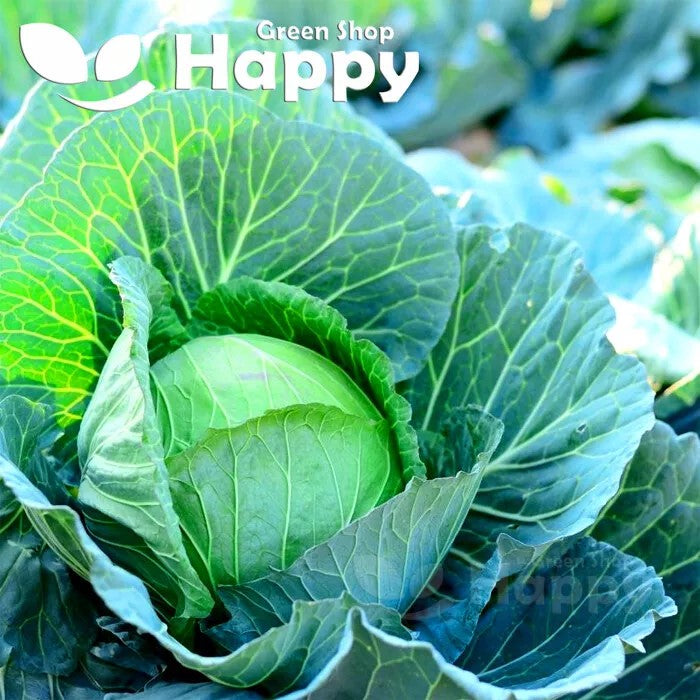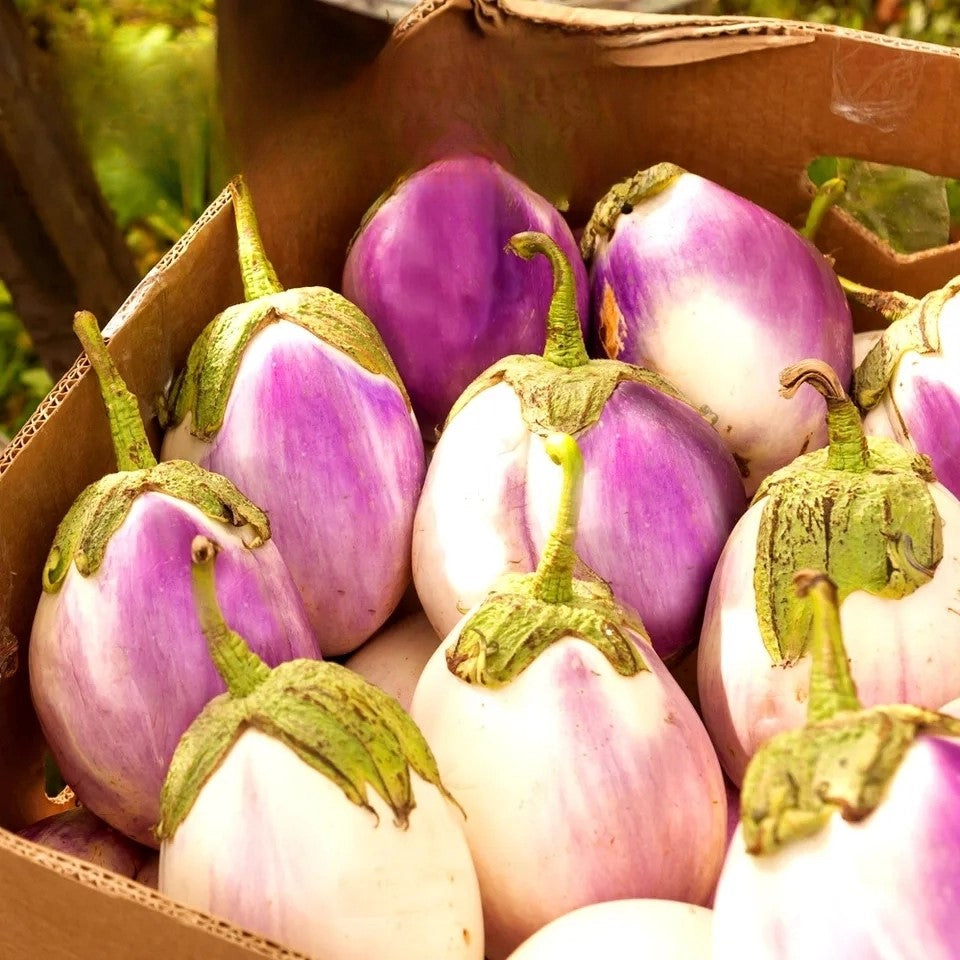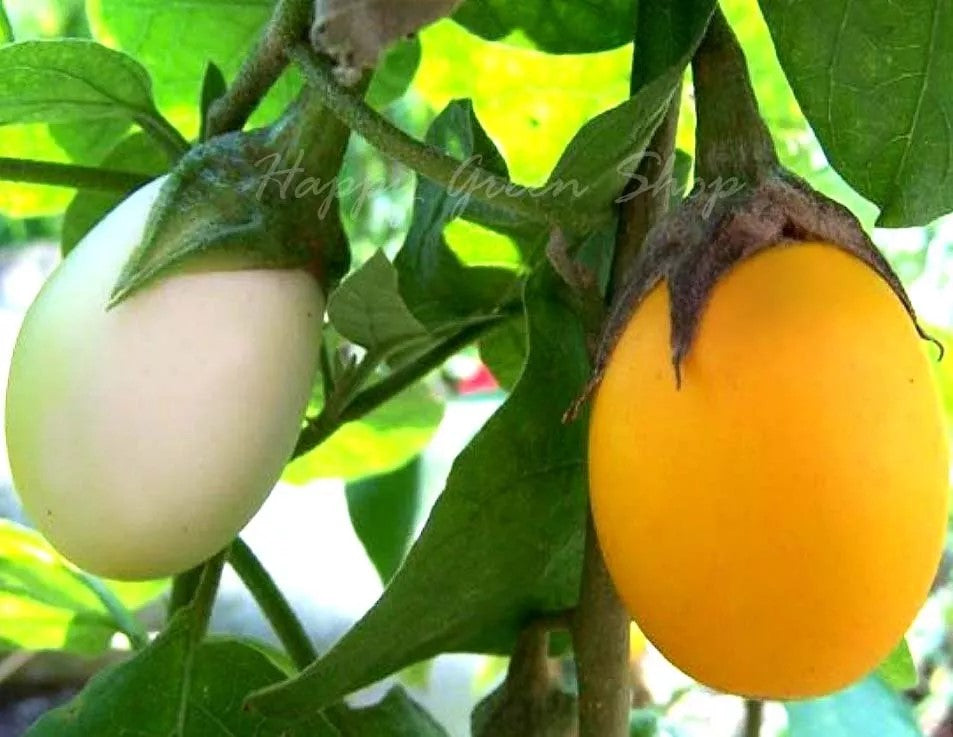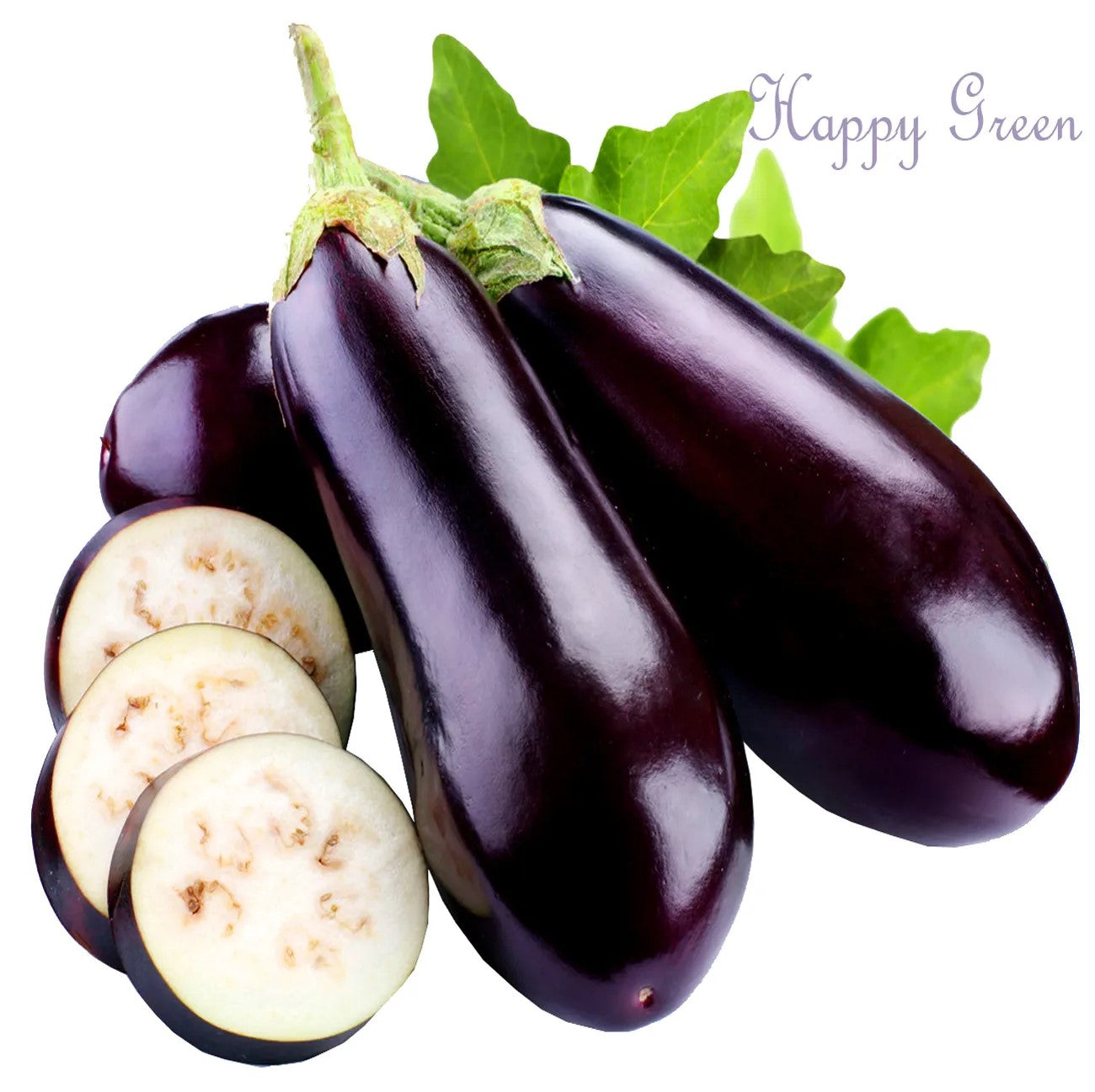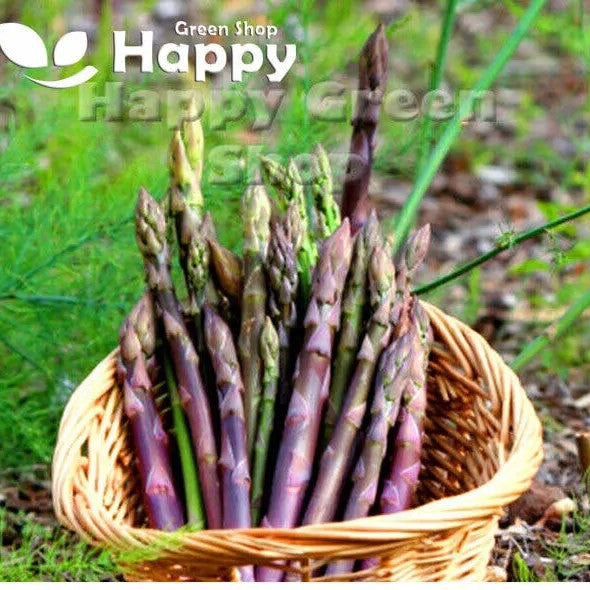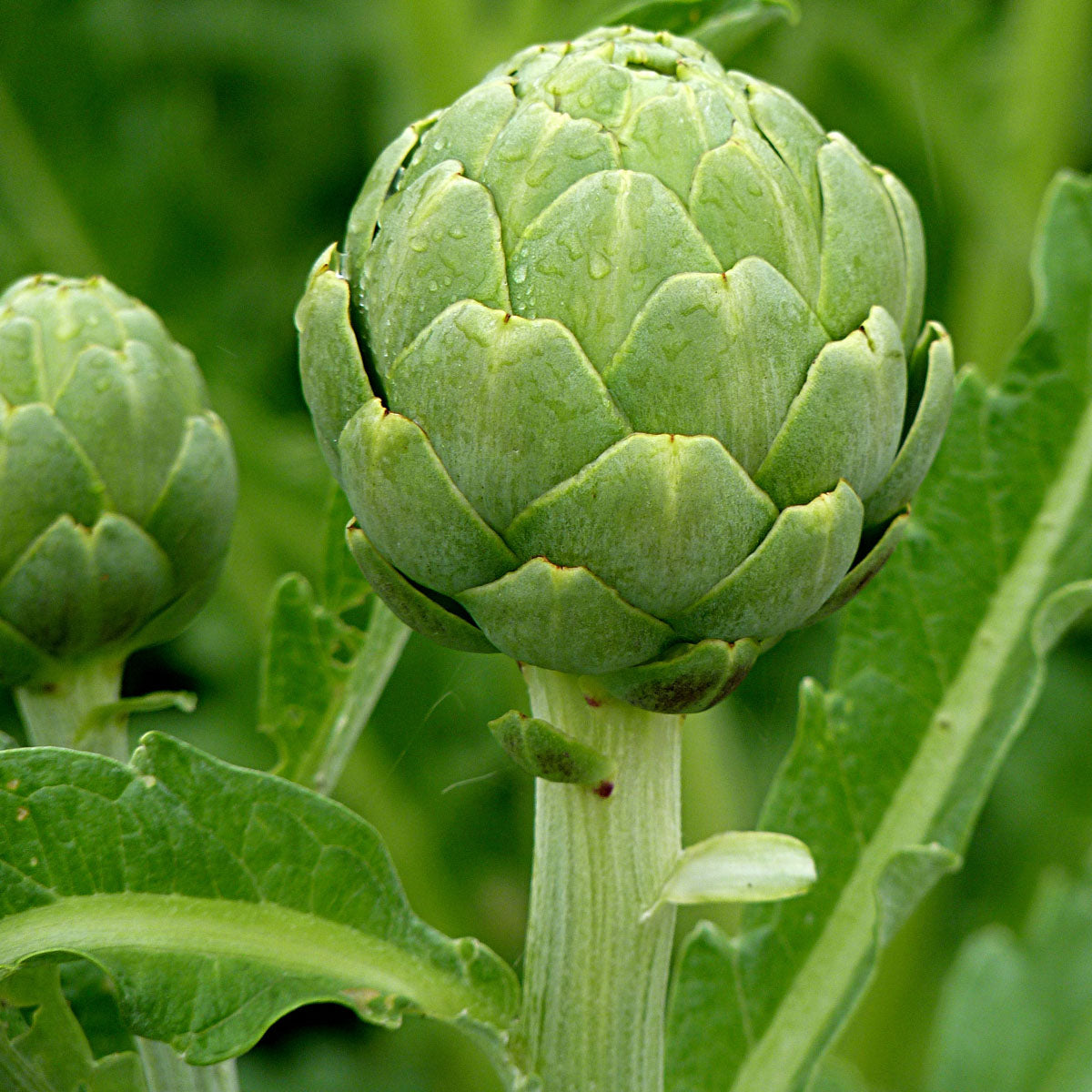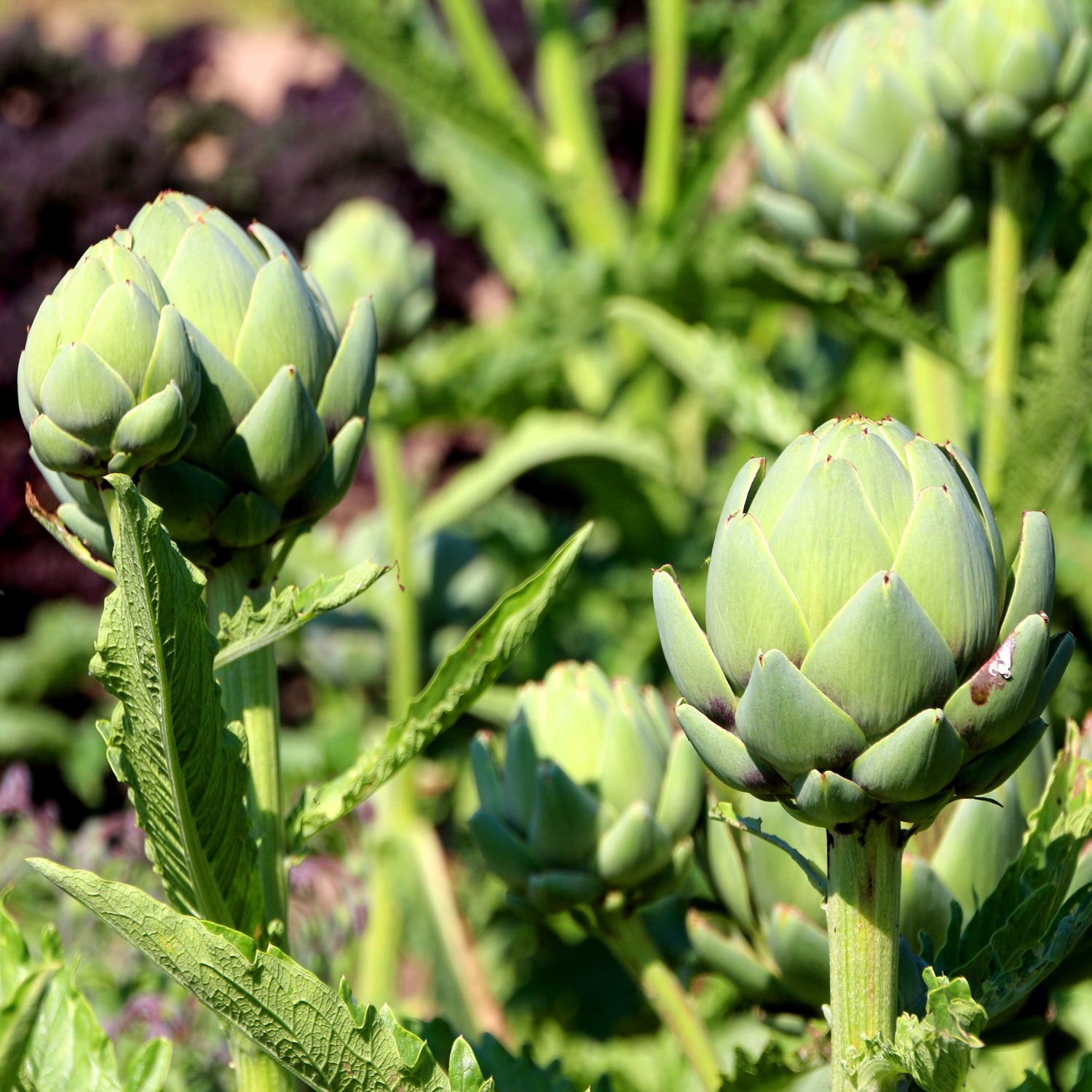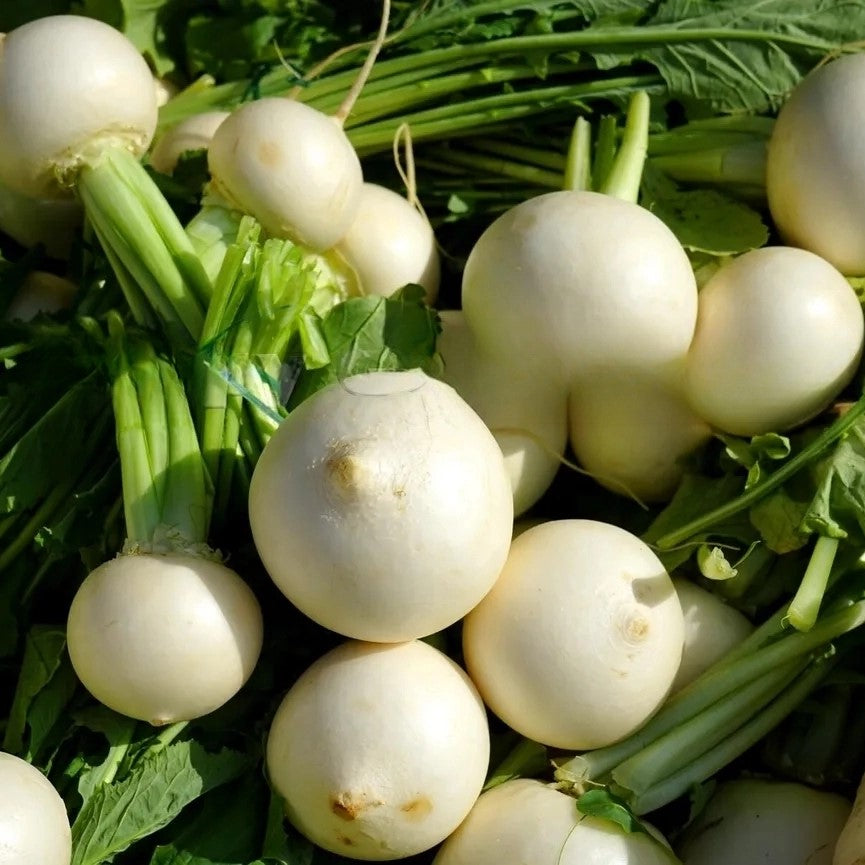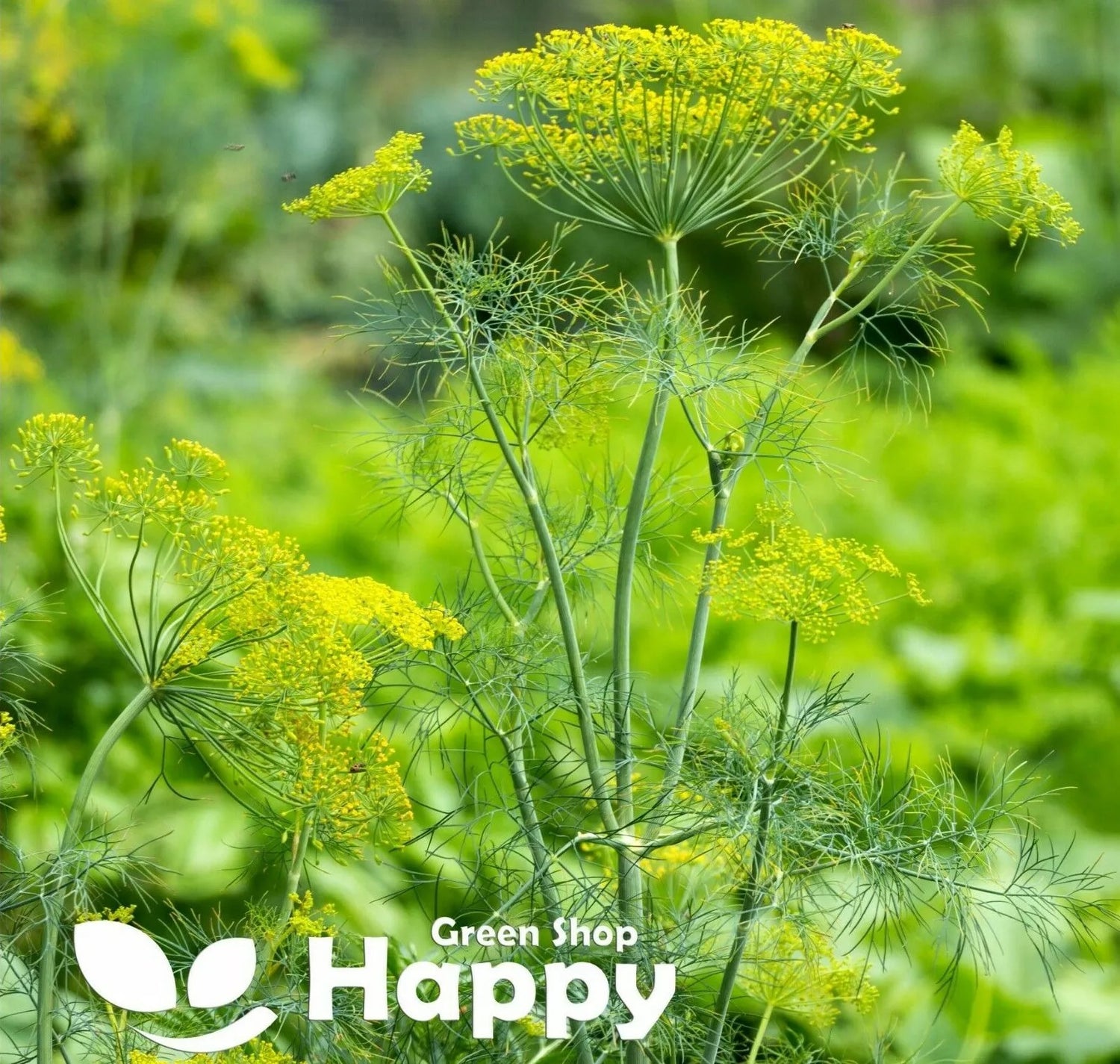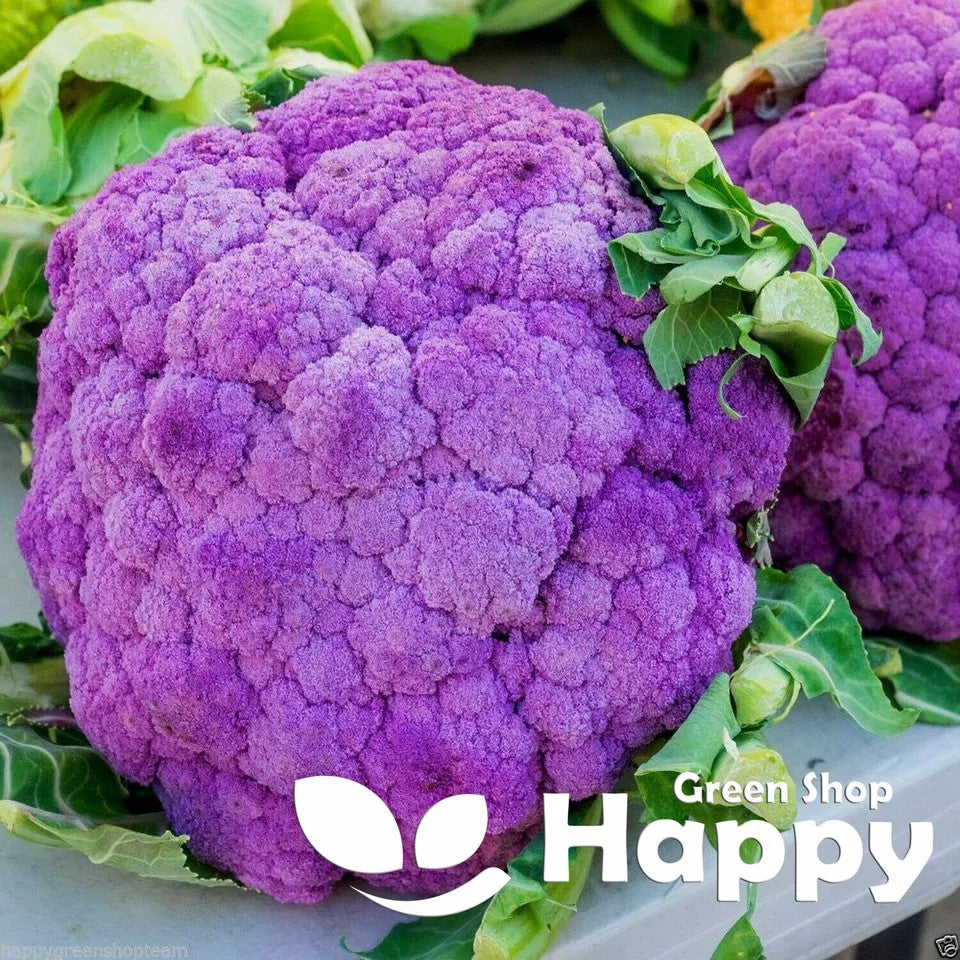Sort by:
190 products
190 products
Autumn Cabbage 'Stonehead' – Seeds (Brassica oleracea)
The Autumn Cabbage 'Stonehead' is a reliable hybrid variety that produces solid, round heads with crisp, tender leaves. Known for its excellent uniformity and resistance to splitting, this cabbage is perfect for autumn harvests and offers a mild, sweet flavor. Its compact growth habit makes it ideal for smaller garden spaces while still delivering generous yields.
How to Grow
-
Sow seeds indoors from February to April or directly outdoors from April.
-
Plant 1 cm deep in trays or modules and transplant when seedlings are strong enough.
-
Space plants 30–40 cm apart in firm, fertile soil with plenty of moisture.
-
Harvest from late summer into autumn as heads mature.
Key Features
-
Hybrid cabbage with solid, round heads
-
Sweet, mild flavor and tender texture
-
Excellent resistance to splitting
-
Compact growth, great for smaller gardens
-
Perfect for cooking, steaming, and coleslaw
Ideal For
-
Autumn kitchen gardens
-
Fresh cooking and storing
-
Gardeners seeking reliable, uniform harvests
Sowing & Harvest
-
Sow: February to April
-
Harvest: August to October
Quick Tip
-
Keep soil consistently moist to encourage dense, firm heads and avoid stress splitting.
Aubergine 'Rotonda Bianca Sfumata di Rosa' – Seeds (Solanum melongena)
A true Italian heirloom, ‘Rotonda Bianca Sfumata di Rosa’ is one of the most striking and delicious aubergines you can grow. Its fruits are round, creamy-white with beautiful pink to violet shading, making them as decorative as they are tasty. The flesh is tender, mild, and sweet, never bitter, and perfect for grilling, roasting, or adding to Mediterranean dishes. Productive plants produce a generous harvest throughout summer.
How to Grow
-
Sow indoors: January – April, in pots or seed trays, 0.5 cm deep.
-
Germination: 18–25°C; aubergines need steady warmth to sprout.
-
Transplant: Pot on seedlings and harden off before planting outdoors after frost.
-
Spacing: 50–60 cm apart.
-
Position: Full sun, sheltered and warm spot (greenhouse or polytunnel recommended in cooler climates).
Key Features
-
Traditional Italian heirloom aubergine
-
Decorative, round fruits with pink-violet blush
-
Tender flesh with mild, sweet flavor
-
Prolific, long harvest period
-
Ideal for grilling, baking, or Mediterranean cooking
Ideal For
-
Mediterranean cuisine (Parmigiana, Ratatouille, Grilled Aubergine)
-
Greenhouses, polytunnels, or sunny gardens
-
Gardeners seeking unique, colourful crops
Sowing & Harvest
-
Sow: January – April
-
Harvest: July – September
Quick Tip
For best results, pinch out the growing tip once the plant has 5–6 fruits developing. This helps focus energy on ripening for a bigger, tastier harvest.
Aubergine 'Golden Egg' – Seeds (Solanum melongena)
Add a touch of the unusual to your garden with the striking Golden Egg aubergine. This rare and decorative variety produces small, oval fruits that ripen to a stunning golden yellow. Compact and easy to grow, it’s both ornamental and edible, making it a real talking point in any kitchen garden, greenhouse, or patio pot. The tender fruits are perfect for grilling, baking, or adding a unique twist to your favorite dishes.
How to Grow
-
Sow seeds indoors from January to April at 20–25°C.
-
Sow 0.5 cm deep in trays or pots of moist compost.
-
Transplant seedlings into larger pots when strong enough.
-
Harden off and plant into greenhouse borders, grow bags, or sunny sheltered beds after the last frost.
-
Water regularly and support as fruits develop.
Key Features
-
Rare aubergine variety with golden-yellow fruits
-
Compact plants, ideal for pots and greenhouses
-
Edible and ornamental – perfect for display and cooking
-
Easy to grow with good yields
-
Unique centerpiece for kitchen gardens
Ideal For
-
Greenhouses, polytunnels, and sunny patios
-
Decorative planting with edible appeal
-
Grilling, baking, and creative cooking
-
Gardeners looking for something unusual
Sowing & Harvest
-
Sow: January to April (indoors)
-
Depth: 0.5 cm
-
Spacing: 40–50 cm
-
Harvest: August to October
Quick Tip
-
For best results, pick fruits regularly when firm and brightly colored to encourage continuous production.
Aubergine 'Black Beauty' – Seeds (Solanum melongena)
The classic Black Beauty aubergine is a time-honored variety producing large, glossy, deep-purple fruits with tender flesh and rich flavor. Compact and reliable, it’s a favorite for home gardeners and a staple in Mediterranean cuisine. Perfect for grilling, roasting, baking, or adding to curries and stews, this aubergine is as versatile as it is delicious.
How to Grow
-
Sow seeds indoors from January to April in trays or pots.
-
Sow 0.5 cm deep in moist compost, keeping warm at 20–25°C.
-
Transplant seedlings into larger pots when big enough to handle.
-
Harden off and plant out in a greenhouse or sunny, sheltered spot once frosts have passed.
-
Support plants as they grow and keep soil moist.
Key Features
-
Classic heirloom aubergine variety
-
Large, glossy, deep-purple fruits
-
Rich, tender flesh with excellent flavor
-
Reliable and high-yielding
-
Suitable for greenhouses, polytunnels, or warm outdoor sites
Ideal For
-
Mediterranean cooking
-
Roasting, grilling, frying, and stews
-
Greenhouses, polytunnels, or sunny patios
-
Home gardeners seeking a proven classic
Sowing & Harvest
-
Sow: January to April (indoors)
-
Depth: 0.5 cm
-
Transplant spacing: 40–50 cm
-
Harvest: August to October
Quick Tip
-
Pinch out the growing tip when the plant reaches about 30 cm to encourage bushier growth and more fruit.
Asparagus 'D'Argenteuil' Seeds (Asparagus officinalis)
Enjoy a gourmet perennial crop with Asparagus 'D'Argenteuil' (Asparagus officinalis). This heirloom variety is prized for its tender, pale pink-tipped spears and excellent flavor. Hardy and long-lived, once established it provides delicious spring harvests year after year, making it a rewarding addition to any vegetable garden.
How to Grow
-
Sow seeds indoors in spring or directly outdoors after frost.
-
Use fertile, well-drained soil in full sun.
-
Sow 1 cm deep, spacing 8–10 cm apart in rows.
-
Transplant seedlings to a permanent bed the following spring, spacing 30–45 cm apart.
-
Allow plants to establish for 2–3 years before heavy harvesting.
Key Features
-
Classic French heirloom asparagus variety
-
Tender spears with pink-tinged tips
-
Excellent flavor and texture
-
Hardy perennial crop with long productivity
-
A rewarding plant for patient gardeners
Ideal For
-
Perennial vegetable gardens
-
Homegrown gourmet cooking
-
Spring harvests year after year
-
Gardeners seeking long-term crops
Sowing
-
Best time: Spring after frost
-
Depth: 1 cm
-
Spacing: 8–10 cm in rows, 30–45 cm when transplanting
-
Prefers fertile, well-drained soil in full sun
Quick Tip
-
Do not harvest heavily in the first two years; allow plants to establish for abundant future yields.
Artichoke 'Green Globe' Seeds (Cynara scolymus)
Grow impressive, globe-shaped artichokes with Artichoke 'Green Globe', a classic variety renowned for its large, tender, flavorful buds. Perfect for fresh cooking, steaming, or grilling, this hardy perennial thrives in sunny, well-drained gardens. Its striking foliage also makes it an ornamental feature in borders and vegetable beds.
How to Grow
-
Sow indoors 8–10 weeks before the last frost.
-
Use fertile, well-drained soil in a sunny position.
-
Transplant seedlings 90–120 cm apart after frost risk passes.
-
Mulch and water regularly for optimal growth.
-
Harvest buds when tight and firm before they open.
Key Features
-
Classic globe-shaped artichoke buds
-
Large, tender, and flavorful
-
Hardy perennial for long-term harvest
-
Ornamental silvery-green foliage
-
Excellent for steaming, grilling, or fresh eating
Ideal For
-
Home vegetable gardens and allotments
-
Gourmet cooking and fresh eating
-
Adding ornamental value to borders
-
Gardeners seeking a productive, long-term crop
Sowing
-
Best time: Indoors in late winter/early spring
-
Depth: 0.5–1 cm
-
Spacing: 90–120 cm between plants
-
Prefers sunny, well-drained soil
Quick Tip
-
Remove small side shoots to focus energy on producing large main buds.
Turnip 'Snowball' – Seeds (Brassica rapa)
Grow crisp, tender, and sweet Turnip 'Snowball', a classic variety known for its round, white roots and mild flavor. Ideal for roasting, steaming, or fresh in salads, this easy-to-grow turnip is perfect for home gardens, allotments, and container planting. Quick to mature, it provides a reliable harvest of uniform, flavorful roots throughout the season.
How to Grow
. Sow outdoors: March – July, 1–2 cm deep in rows 30 cm apart
. Thin seedlings to 8–10 cm apart for proper root development
. Prefers fertile, well-drained soil in full sun or partial shade
. Keep soil consistently moist for tender, sweet roots
. Harvest: 50–60 days after sowing, when roots are 5–8 cm in diameter
Key Features
. Classic white round turnip with mild, sweet flavor
. Quick-maturing and easy-to-grow
. Ideal for roasting, steaming, or fresh salads
. Produces uniform, tender roots
. Suitable for home gardens, allotments, and containers
Ideal For
. Fresh eating, roasting, and steaming
. Gardeners seeking reliable, fast-growing root vegetables
. Succession sowing for continuous harvest
. Companion planting with peas, onions, or cabbage
Sowing & Harvest
. Sow: March – July
. Harvest: May – September
Quick Tip
For tender, flavorful roots, harvest turnips promptly when they reach 5–8 cm; leaving them too long can result in woody texture.
Dill Seeds (Anethum graveolens)
Bring fresh flavor and fragrance to your garden with Dill, a versatile culinary and medicinal herb. Known for its delicate feathery foliage and aromatic seeds, dill is a must-have for seasoning fish, soups, pickles, and salads. Easy to grow and quick to mature, it also attracts beneficial pollinators, making it a perfect addition to herb beds and kitchen gardens.
How to Grow
-
Sow directly outdoors from spring to early summer.
-
Prefers light, well-drained soil in full sun.
-
Sow thinly, 0.5–1 cm deep in rows 30 cm apart.
-
Thin seedlings to 15 cm spacing.
-
Avoid transplanting as dill dislikes root disturbance.
Key Features
-
Aromatic herb with feathery foliage and seeds
-
Delicious for seasoning fish, soups, salads, and pickles
-
Quick-growing and easy for beginners
-
Attracts bees and beneficial insects
-
Dual use: fresh leaves and dried seeds
Ideal For
-
Home cooking and herbal tea
-
Pickling and preserving vegetables
-
Companion planting in the garden
-
Attracting pollinators and beneficial insects
Sowing
-
Best time: March to June
-
Depth: 0.5–1 cm
-
Row spacing: 30 cm
-
Plant spacing: 15 cm after thinning
-
Harvest: Leaves in 6–8 weeks, seeds later in the season
Quick Tip
-
For a continuous supply, sow dill little and often every 2–3 weeks through the summer.
Cauliflower ‘Di Sicilia Violetto’ Seeds (Brassica oleracea)
Bring color and flavor to your garden with Cauliflower ‘Di Sicilia Violetto’ (Brassica oleracea). This traditional Italian heirloom produces striking purple heads with a delicate, nutty flavor, perfect for steaming, roasting, or adding to vibrant salads. Easy to grow and highly nutritious, it’s a standout choice for gardeners who love unique vegetables.
How to Grow
-
Sow seeds indoors from early spring, or directly outdoors after frost risk has passed.
-
Use fertile, well-drained soil in full sun.
-
Sow seeds 0.5–1 cm deep and thin seedlings to 45–60 cm apart.
-
Keep soil consistently moist and protect young plants from pests.
-
Harvest heads when firm, tight, and brightly colored.
Key Features
-
Striking purple cauliflower with nutty flavor
-
Traditional Italian heirloom variety
-
Nutritious and packed with antioxidants
-
Suitable for steaming, roasting, and fresh dishes
-
Reliable crop for vegetable gardens and allotments
Ideal For
-
Home gardens, allotments, and raised beds
-
Cooking, steaming, roasting, and vibrant salads
-
Gardeners who enjoy growing heirloom vegetables
-
Adding color and nutrition to the kitchen garden
Sowing
-
Best time: Early spring indoors or late spring outdoors
-
Depth: 0.5–1 cm
-
Spacing: 45–60 cm apart
-
Prefers full sun and fertile, well-drained soil
Quick Tip
-
Blanching isn’t necessary with this variety—the purple heads naturally keep their vibrant color until cooking.
Showing 189/190


